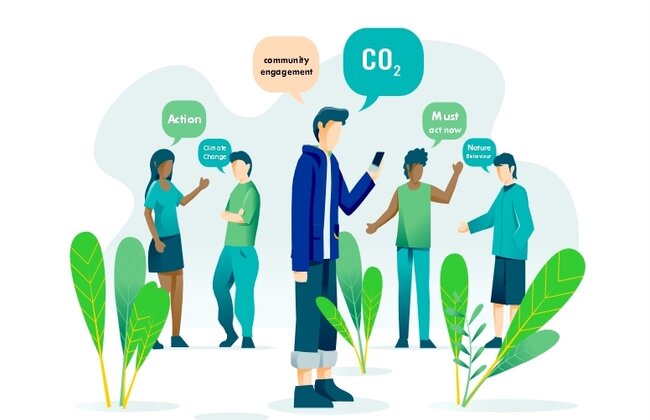
Dec. 3 marks the first dedicated “health day” at COP since the first of the climate change-focused United Nations conference of parties was held in 1995. A dedicated day to focus on the climate-health nexus seems long overdue — 28 years — given the obvious linkages. Nevertheless, it’s here and that’s a positive sign. What’s less positive is a seeming lack of practical solutions addressing the impacts of climate change on health that are ready to implement right now. Because climate change is affecting health right now.
The 2023 Lancet Countdown reports that as we reach 1.14 degrees Celsius heating above pre-industrial levels, populations face staggering increases in climate-related risk factors. Heat-related deaths for people over 65 increased by 85% between 2013-2022 compared to 1991-2000 and are expected to increase by 370% by midcentury even if we hit climate goals.
Transmission of vector-borne diseases like Dengue and of waterborne diseases like Vibrio are also on the rise. Higher frequency of drought and heat waves means hundreds of millions more people will experience food insecurity. Scientific evidence documenting the climate-health linkage is also growing, with three times more papers on the subject published between 2012 and 2022.
Yet, despite the growing body of evidence at the population level, we’re lacking actionable solutions for health systems and communities. What is lost in the population level risks and projections is simple: The individual, community-informed perspective on how climate is impacting individual and household health, in their own words and within the context of everyday life.
In our work we’ve already seen the impacts of the changing climate first-hand: The patient in Malawi after the recent cyclones cut off from access to medical care, the family in Kenya struggling to grow food to eat in the face of drought, the individual in Bangladesh suffering from malaria after the increased flooding, or the elderly patient in Camden who can’t afford air conditioning.
We’ve also seen health systems ill-equipped to respond. Current health systems were designed in a pre-climate crisis era. The evidence used to enact health policies, train health care workers, and advise patients on treatment protocols was derived from a stable climate scenario. As a health sector, it’s time to take stock and start designing health services for a future that is already here.
Data and insights with a person-centered lens
To deliver climate-adapted health services, we first need to understand the climate crisis at the ground level through quality data and insights. Patients, especially those living in rural communities in low- and middle-income countries — those most at risk from climate catastrophe — can be difficult to engage with in a meaningful way. These individuals rarely find their way to higher-level hospitals where their data is reported in routine health information management systems such as DHIS2, and they are unlikely to engage in formal studies used to inform evidence-based climate policies. If we as a global health community want to respond to the urgency of the climate crisis in a way that represents those most at risk, we must find a way to represent the voice of the patient in our evidence.
This is where community health workers can play an important role. We know that community health workers work. They are vital in extending the reach of formal health systems. In times of crisis such as the recent COVID-19 pandemic, they stabilize unstable health systems. They are neighbors, trusted care providers, and community members themselves.
When well-trained, remunerated, and equipped with digital tools, they become the eyes and ears of the health system. They amplify the individual voices of communities grappling with rapid-paced and unpredictable changes the climate crisis continues to introduce. The data and contextual insights that community health workers collect and use are the key to designing resilient health systems.
Data and insights are critical whether one is developing low-tech or high-tech interventions. In a world where artificial intelligence models built on vast datasets are increasingly leveraged to design and refine digital health platforms, community health workers provide a clarifying voice.
As health researchers interpret patient-level data to develop climate-adapted technology, AI models will play a pivotal role in predicting climate risk, guiding communities to safe places during catastrophes, or preparing health systems for climate shocks. Community health workers have an important role to play in grounding these models in true community needs and to reflect back correction when needed.
Data-driven, community-led solutions
Community-level data means little unless it leads to actions or interventions that help patients. We already have the tools and technologies to enable climate-informed, data-driven interventions. For example, community health workers using the SPICE technology — an open-source digital platform designed for community health and primary care — already understand how to identify patients at high risk of diseases and can provide ongoing care with comprehensive decision support.
An open-source, standards-based platform such as SPICE enhanced to address climate risks alongside diseases such as tuberculosis, HIV, or hypertension would be a game changer. This data, when linked to national registries and routine surveillance programs, could be a bridge connecting patients’ first-hand experience of climate to population-level insights in real time.
By matching community-level insights with national weather data and disease surveillance data we could identify those at highest risk of vector-borne illness, and focus campaigns in those geographies. Stock for new illnesses could be distributed ahead of impending outbreaks. Or by predicting those at risk of exposure to extreme heat, governments could create cooling centers for vulnerable individuals in high-risk zones. Leveraging data collected by community health workers and then enabling those community health workers with digital tools and interventions built on that very data, health systems could respond to the climate crisis as it unfolds.
The operative word, however, is “could.” For the most part, health systems are not yet leveraging community health workers, technology, or data to design interventions that address climate health risks. To do this, we’ll need political will and partnerships from donors and innovators.
During the recent cyclones in Malawi, President Lazarus Chakwera took steps in the right direction. He championed community health workers as an established and trusted network able to provide sustainable care close to those in need. He called on global communities of investors, researchers, and practitioners to boost existing community health infrastructure, including digital, to support climate-adapted health systems.
Continuously learning health systems
Climate-adaptive health systems need to continuously learn from and engage with patients to mitigate climate risk. This looks different from the current status quo where we collect and collate monthly reports, rolling up data into dashboards to measure goals set five years in advance.
Health systems will need to shift from reactive to predictive, leveraging real-time patient insights to develop health systems that can respond to evolving climate impacts. We have the infrastructure to make this happen: Community health workers, standards-based digital platforms, and a growing body of climate health research. Earlier this year, in anticipation of the first health day at COP 28, Tedros Adhanom Ghebreyesus, World Health Organization director-general, said: “The most compelling reasons for climate action are not in the future — they’re right here, and right now.” Let’s hope that the first health day at COP 28 is the catalyst needed to start creating climate-adaptive health systems for now, not for a distant future.
Don’t miss any updates as we work to design health systems for the future. Connect with Medtronic LABS on LinkedIn, Facebook, and Instagram.
Anne Stake, as chief strategy and product officer at Medtronic LABS, drives the strategic vision of LABS to design tech-enabled, outcomes-focused health care delivery models with ministries of health in Africa and Asia. She holds degrees from Stanford University, Parsons School of Design, and Oxford University.
Maeghan Orton supports product strategy for Medtronic LABS on developing digital health products to support climate-adaptive health care. She worked with Google Health AI and WHO’s digital health and innovation team. She is pursuing a doctorate on climate change, AI, and global health with the University of Edinburgh.


